The Quadrilateral Security Dialogue (QSD) members - Australia, India, Japan and the United States (US) - met in June 2018 in Singapore on the sidelines of the Association of Southeast Asian Nations (ASEAN) senior officials’ meeting, and later issued respective media releases. This was the second meeting of the QSD, the first such engagement was held in November 2017 in Manila, Philippines.
Some of the common key phrases in their press releases are: ‘free, open and inclusive Indo-Pacific’; ‘rule-based order’; ‘ASEAN centrality’; ‘freedom of navigation and over flight’; ‘respect for international law and sovereignty’; ‘safeguarding and strengthening roles’; ‘partnership with others; ‘shared democratic values’; ‘shared values and principles’; and ‘regular consultations’. Besides, their commitment to ‘development, connectivity, good governance, regional security, counter terrorism, non-proliferation and maritime cooperation’ was mentioned. Barring a few differences in the choice of text, the contents of press releases showcase several convergences and these are noteworthy.
The QSD has acknowledged the centrality of ASEAN which puts to rest fears among its member states of being pulled apart given that each has a position on China and enjoy varied relationships. ASEAN itself has a complex web of engagements with China such as political-security dialogue, economic relations, socio-cultural cooperation, environmental cooperation and a host of memoranda of understandings on a variety of issues. Likewise, ASEAN and its member states have devised complex relationship with the members of the QSD. However, ASEAN countries believe that the QSD, if targeted against China, can potentially accentuate fault lines among them, and the region would run the risk of jeopardising its agenda of ASEAN unity and economic development and growth.
Noticeably, the QSD press releases have not openly targeted Beijing despite the fact that its members have a number of disputes, disagreements and differences with China over boundaries - (Himalayas and Diaoyu/Senkaku Islands), Taiwan, South China Sea, freedom of navigation, cyber-security, intellectual property rights, trade and tariffs, issues of human rights - nevertheless their interests converge strategically. It is also true that no one country among the QSD members is able to unilaterally balance China, which probably was the reason of their combining together which China construed as a containment strategy.
Although there are visible signs of anxiety among the QSD members over China’s rise, use of the phrase ‘shared democratic values’ in press releases by three of the four QSD members (except India) does give an impression that there may be some differences among the QSD members. At least New Delhi is keen to engage China politically, diplomatically, economically and militarily in its own way.
Arsenal of Democracy
It is the stated goal of the US to “uphold and promote democracy as a means to achieve security, stability, and prosperity for the entire world”. Nearly a century ago, in 1918, the Americans had begun to label themselves as “protector of democracy”, the American Press “one of the most effective weapons in the arsenal of democracy”, and America as the “arsenal for the democratic Allies”.
In his famous radio broadcast of December 29, 1940, President Franklin D. Roosevelt announced to the people of the US that their country was committed to supplying military supplies to the United Kingdom to fight Nazi Germany. The text of his over 30-minute speech underlined the imperatives of American engagement in the conflict and included the phrase, “The great arsenal of democracy” which specifically referred to the US industrial complex as the primary supplier of military hardware and materiel for the Allied war effort. He warned that “If Great Britain goes down, the Axis powers will control the continents of Europe, Asia, Africa, Australia, and the high seas -- and they will be in a position to bring enormous military and naval resources against this hemisphere.” He impressed upon fellow Americans that it was their duty to preserve universal freedom and argued for “democracy's fight against world conquest” through rearmament of the US and be the “the great arsenal of democracy.”
This has been the recurring feature of US’ foreign policy and in the post-war period, Washington has been a staunch promoter of democracy. It has been noted that “when historians write about US foreign policy at the end of the 20th century, they will identify the growth of democracy - from 30 countries in 1974 to 117 today - as one of the US’ greatest legacies.”
New Delhi’s Approach
While that may be so, it is useful to keep in mind that the US has its own tools and practices to promote democracy. Surely, the US’ understanding and advancement of democracy is at variance with that of India, and New Delhi’s deliberate omission of the word ‘democratic’ in its press release after the QSD meeting in Singapore and simply stating ‘common commitment based on shared values and principles’ is laudable. In fact, democracy is embedded in the above phraseology and does not target any country.
There are at least four important reasons which preclude India from supporting any ‘democracy driven’ QSD that may target China. First, the constants of geography and long pending boundary dispute; New Delhi is careful how far it is willing to keep its border alive in the Himalayas particularly after the Doklam crisis, given that there is an active military engagement with Pakistan along the western border. Besides, China and Pakistan enjoy a strong anti-India convergence.
Second, Chinese naval posturing in the Indian Ocean has unnerved the Indian Navy with frequent sighting of Chinese conventional and nuclear propelled submarines that are seen as a challenge to the India’s sphere of influence in the Indian Ocean. Closely associated is the fact that by 2020 Chinese defence spending would be about US $ 233 billion and the PLA Navy would have a strength of nearly 500 ships including aircraft carriers.
Third, India, as the largest democracy of the world does not wish to be part of any alliance or partnership targeted against another nation/s; instead New Delhi supports an open, inclusive and multipolar world order. It is important to recall China’s reaction to the 2007 Exercise Malabar (which included Australia, Japan and Singapore) which was perceived as a naval ‘concert of democracies’ targeting China. It invited sharp reactions from Beijing which sought an explanation on the ‘purpose and the intent’ of the exercises. Similarly, the January 2015 ‘India-US Joint Strategic Vision for the Asia-Pacific and Indian Ocean Region’, issued during President Obama’s visit to India, confounded Beijing over reference to India’s ‘Act East’ policy, and the US ‘Rebalance’ in the Vision Document suggesting New Delhi’s tacit support for the US strategy for Asia.
Fourth, India has launched a sophisticated web of intersecting as also diverse relationships through diplomatic and security dialogues with a number of countries. These are christened ‘2+2 dialogues’ and serve as the bedrock of its proactive foreign policy. Currently this mechanism is operational for engagements with Australia, France, Japan, Russia and the US. On their part, India and China have set up over 30 bilateral dialogue mechanisms in diverse areas such as politics, economics, regional and international affairs, and culture. In 2017, both sides agreed to a ‘strategic dialogue’ to develop a substantive discourse about important global issues. The May 2018 Wuhan Consensus is a significant developments for India China relations.
Concluding Thoughts
India had long adhered to and practiced non-alignment as its stated foreign policy objective which has now gone through metamorphosis and mutation with a preference for strategic partnerships, active participation in regional security forums and support to multilateral approaches to global problem. It has strongly exhibited aversion and dislike for alliances, which it believes can undermine democratic institutions.
Similarly, multilateralism is the preferred tool for India for its cooperative maritime agenda. This belief also resonates at the politico-diplomatic and military levels in the Indo-Pacific region. Significantly, regional multilateral institutions and arrangements have done remarkably well to address many maritime security threats and challenges.
In the above context, navies train and exercise together to ensure open seas and protect sea based commerce; but politico-diplomatic contestations can sometimes undermine ‘inclusion’ as witnessed by the deliberate barring of China from the US led 2018 Rim of the Pacific (RIMPAC) Exercises due to its continued build-up and militarisation of the South China Sea.
As of this writing, Indian warships are participating in the 2018 RIMPAC, but there has been no reaction from any of the members of the QSD on leaving out China. But it is fair to assume that the ‘disinvite’ has the potential of a more serious debate among the QSD members over US’ decision of the exclusion.
(The author is a former Director National Maritime Foundation, New Delhi)
(The paper is the author’s individual scholastic articulation. The author certifies that the article/paper is original in content, unpublished and it has not been submitted for publication/web upload elsewhere, and that the facts and figures quoted are duly referenced, as needed, and are believed to be correct). (The paper does not necessarily represent the organisational stance... More >>
Cover Image Source: http://www.youngbhartiya.com/article/the-quadrilateral-security-dialogue-what-does-it-hold


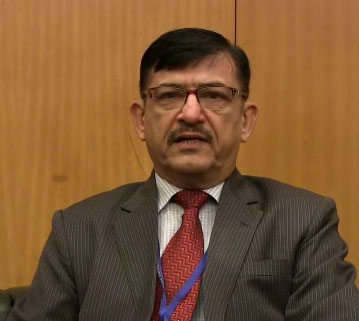
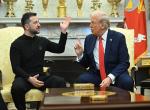

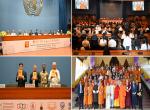
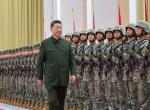
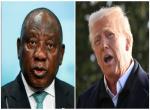


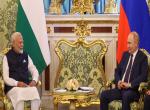
Post new comment